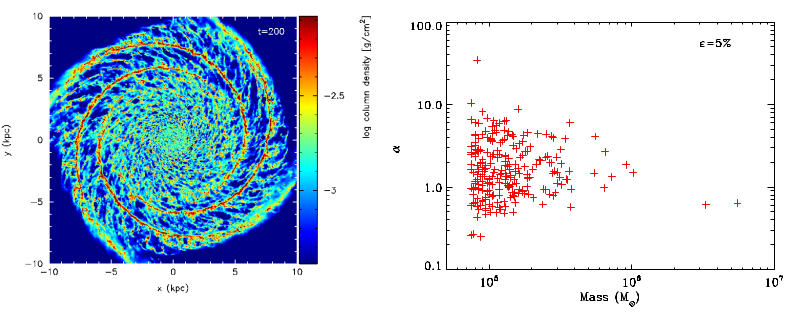| EPoS Contribution |
|
Unbound molecular clouds and their evolution
Clare Dobbs University of Exeter, Exeter, UK | |
| If molecular clouds are gravitationally bound, we might expect they that they are all centrally condensed and roughly spherical. However observations show many examples of molecular clouds (e.g. California, Cygnus, Perseus, Taurus) which are often elongated, with distributed star formation. Indeed recent Galactic observations, extragalactic observations and simulations point towards a distribution of both unbound and bound clouds. We present galaxy simulations in which at least half of the clouds are unbound (though containing bound regions within them which undergo star formation). We find that predominantly feedback, and also cloud collisions, act to ensure that a significant fraction of the cloud population is unbound at any one time. Consequently the star formation rate also remains relatively low. In a simulation with minimal feedback, a population of mostly bound clouds emerges which is found to be implausible, as the clouds are unable to be disrupted by feedback, the star formation rate becomes very high, and most of the clouds have aspect ratios of one which is contrary to observations. | |
 | |
| Caption: An isolated galaxy simulation is shown (left) from a calculation modelling the ISM in a spiral galaxy, including stellar feedback. The distribution of the virial parameter, alpha, is shown in the right hand figure. | |
| Collaborators: Andreas Burkert, USM, Germany Jim Pringle, IoA Cambridge, UK |
Key publication
|

